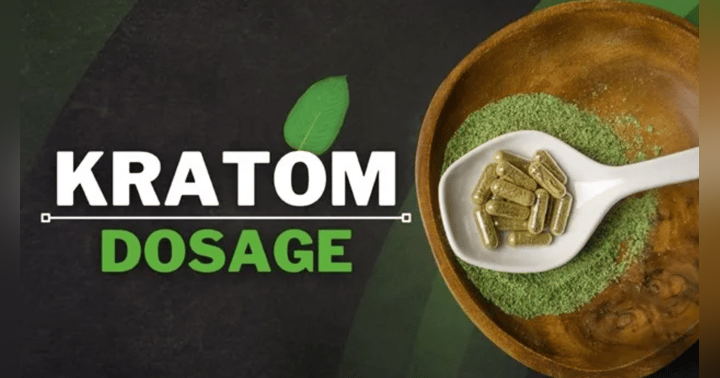Mastering Kratom Tea: A Comprehensive Brewing Guide

See original article from Top Tree Herbs: How to Make Kratom Tea
Tired of bitter slurries or expensive liquid kratom products? New to kratom and looking for a beginner-friendly way to try it out? Making your own kratom tea is an excellent way to get started.
Kratom isn't like most other herbal teas. There are a few important things you should know before brewing to ensure you make strong, effective tea that also tastes great. Here are the essentials we'll cover below:
- The origins of kratom tea
- Kratom chemistry and brewing science
- Choosing the right type of kratom for tea
- The easiest kratom tea brewing instructions
- Recommended tea recipes for great flavor and added benefits
Connecting to Traditions that Uplift Our Modern Lives
Kratom tea has been consumed for centuries in regions where the tree naturally grows. Traditionally, communities would brew large pots of kratom leaves in water over a fire to make tea. Laborers would drink this tea during or after long, challenging days of work.
As kratom tea brewing has been adapted to fit modern lifestyles across the globe, it still brings people together for an experience, instead of being something people consume alone just for the effects.
Kratom Chemistry from Leaf to Mug
To understand how to make great kratom tea, let's start by comparing kratom leaves to coffee and other types of tea.
Coffee and black tea contain active alkaloids like caffeine that dissolve very easily in water. This means you can steep coffee beans or tea leaves in hot water for just a few short minutes to get all of the desired compounds out of the plants and into your mug.
Kratom is different. The active alkaloids in kratom leaves, like mitragynine, speciociliatine, and 7-hydroxymitragynine are not very soluble in water.
If you brewed kratom leaves the same way you brew coffee or other types of tea, you'd most likely be left with a tea without effects. So here are some expert tips you can follow to improve the extraction of alkaloids from the leaves:
- Steep your tea for at least 15-25 minutes
- Brew your kratom in an insulated thermos or in a pot on the stove to prevent heat loss while you steep your tea—don't just use a typical ceramic mug
- Add a splash of lemon juice, lime juice, apple cider vinegar, or another food-safe acid
- Rebrew your tea bags a second time; you can typically get two to three servings of tea from just one tea bag.
- Note that your ideal amount of tea may differ from the amount of powder or other types of kratom you consume. Check out the kratom tea serving size guide for help with finding your sweet spot.
Just like black tea, kratom leaves contain tannins and other phytochemicals that taste bitter. To reduce the bitterness, try drinking your tea cold, adding flavor enhancers (like ginger, agave, mint, or cinnamon), or making one of the specialty recipes below.
Choosing Your Kratom for Tea: Why Crushed-Leaf Tea Bags Stand Out
Crushed-leaf kratom tea bags were first created by two kratom consumers who were tired of how kratom powder tasted and made them feel. They learned from Southeast Asian kratom traditions and founded Top Tree Herbs to make convenient, mess-free tea that tasted better and was easier on their stomachs than powder.
Here's how crushed-leaf tea bags compare to some other popular options for making kratom tea:
- Crushed-leaf tea bags: Make a perfectly smooth brew that's not overly bitter. Pre-measured tea bags make prep easy, and there's no straining required. Look for brands that offer plant-fiber tea bags that are naturally sealed instead of those made with nylon, other plastics, or glue.
- Kratom powder: Very difficult to filter out after brewing and typically produces a more bitter tea flavor and gritty texture. If you try to brew it like coffee, you likely won't get a strong brew and might end up wasting powder.
- Loose-leaf kratom: Can be strained more easily than powder. Takes extra time because you have to measure out your servings and strain the leaves out before drinking your tea.
No matter what type of kratom you prefer, we recommend you always select companies that have their kratom independently lab tested for alkaloid content, heavy metals, and microbiological contaminants.
Each person's ideal type and amount of tea is slightly different. We won't cover which kratom vein color to use for which purpose here, but you can read the guide on how to choose a kratom tea strain to learn more.
How to Brew Easy, Effective Tea
Ingredients
- 1-2 kratom tea bags (3g each)
- 8-12 oz cold, filtered water
- Optional: 1 tsp lemon juice or lime juice
- Optional: 1-3 tsp sweetener of choice
Equipment
- Thermos brew: Insulated thermos and electric kettle
- Stovetop brew: small saucepan with lid
Thermos Directions
- Prep: Add tea bags and optional lemon/lime juice to thermos. Bring water to a boil in an electric kettle; you can also use a stovetop kettle or microwave. Pour boiling water over tea bags and cap the thermos.
- Steep: Leave the tea to steep for at least 15-25 minutes, depending on your desired strength.
- Serve: Remove the tea bags and sweeten to taste. Allow the tea to cool slightly before drinking it. Pour over ice if desired.
- Optional Re-Steep: You can steep your tea bags again for a slightly lighter second cup of tea.
Stovetop Directions
- Prep: Add tea bags, water, and optional lemon/lime juice to the saucepan.
- Brew: Bring water to a boil, then cover the pot and reduce heat to a low simmer. Brew for at least 15-25 minutes, depending on your desired strength.
- Serve: Remove the tea bags and sweeten to taste. Transfer tea to a mug (or pour over ice) and enjoy.
- Optional Re-Steep: You can brew your tea bags again for a lighter second cup of tea.
Recipes to Make the Best-Tasting Tea
A basic kratom tea brew tastes great, but you can also experiment with different kratom brewing methods and exciting kratom tea recipes that keep your routine interesting. Here are a few fan favorites:
- Double Green Kratom Smoothie
- Kratom Rum & Coke Mocktail
- Rich Kratom Hot Chocolate
- Soothing Lemon Ginger Kratom Tea
- Iced Kratom Chai
Here's to Better Brewing
While kratom tea can have numerous physical and mental benefits, there are some considerations to keep in mind:
- Start Small: Particularly for those new to kratom, it's best to start by drinking a small amount of tea and gradually adjust the amount based on your individual needs and experience.
- Quality Matters: The quality of kratom can vary significantly between suppliers. Researching and purchasing lab-tested, high-quality kratom is essential to ensure a safe and effective product.
- Consider Your Health: Consult with a healthcare provider before drinking kratom tea if you have any health concerns or are taking medications.
Whether you're drawn to kratom for its energizing properties, its ability to support relaxation, its improved flavor, or its connection to global tea traditions, following these guidelines will help you brew the perfect cup.
The key to a great kratom tea experience lies in starting with quality ingredients, paying attention to brewing techniques, and tailoring the process to suit your personal preferences and needs. Cheers!










